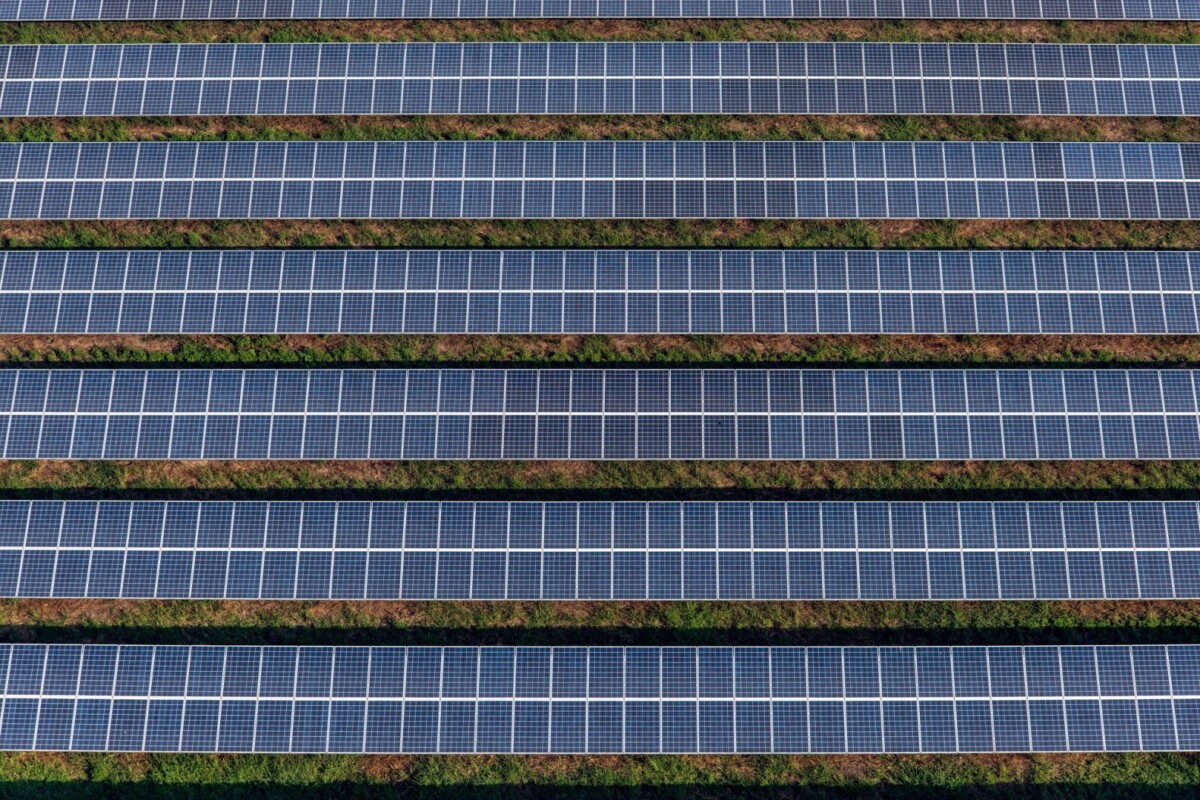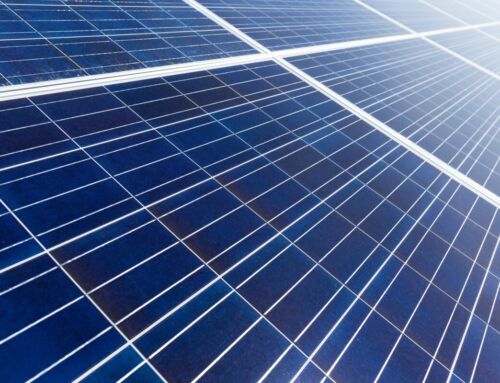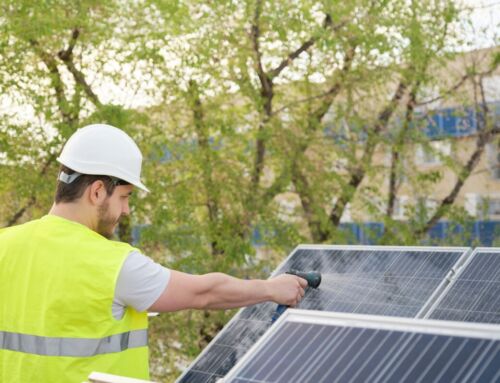Understanding the Size of a Solar Panel for Schools
Understanding the Solar Panel Size for Schools is essential when installing them in schools. Typically, a standard solar panel measures about 65 inches by 39 inches, similar to a large classroom whiteboard. Knowing
how big is one solar panel for a school aids in planning and estimating energy output.
Why Size Matters
- Space Planning: Schools must ensure adequate roof space for the panels.
- Energy Needs: Depending on energy requirements, larger or more panels may be necessary.
- Installation Costs: The size and number of panels impact installation costs.
Factors Influencing Panel Size
- Energy Output: Larger panels produce more energy, crucial for school facilities.
- Roof Size: Available roof space limits panel size and number.
- Budget Constraints: Schools need to balance panel costs with energy needs.
By considering these factors, schools can make informed decisions, optimizing both budget and environmental benefits.
What Determines the Size of a School’s Solar Panel?
Understanding how big is one solar panel for a school is essential for maximizing energy efficiency and cost savings. Schools have significant energy demands, so a well-planned solar setup is necessary to power various facilities. The size of these panels depends on several factors:
1. Energy Needs of the School
- Daily Usage: Higher daily energy consumption requires larger solar panel systems.
- Peak Hours: Schools often use the most energy during daylight, ideal for solar power.
2. Available Roof Space
- Roof Size: More extensive roofs can hold more panels, increasing energy production.
- Orientation and Tilt: The roof’s angle and direction influence sunlight exposure.
3. Local Climate and Sunlight
- Sunlight Hours: Regions with more sunny days can generate more energy, possibly reducing panel numbers.
- Weather Conditions: Cloudy or rainy areas might need more panels to meet energy needs.
By considering these factors, schools can effectively determine the size of their solar panels, optimizing their solar investment.
How Big is One Solar Panel for a School: A Comprehensive Guide
Understanding how big is one solar panel for a school is essential for effectively powering educational institutions with solar energy. Schools consume a lot of electricity for lighting, computers, and projectors, making it vital to know the size of solar panels to plan the number needed.
What Determines the Size of a Solar Panel?
- Standard Dimensions: Typically, solar panels measure about 65 inches by 39 inches, akin to a large classroom whiteboard.
- Power Output: They usually produce between 250 to 400 watts, sufficient for several light bulbs or a computer.
Why Size Matters
The panel size influences how many can fit on a school’s roof, impacting energy production and cost savings. Larger panels may offer more efficiency, generating more power per square foot.
Planning for Installation
- Roof Space: Schools must evaluate their roof space to determine panel capacity.
- Energy Needs: Understanding energy consumption helps decide the number of panels required.
Knowing the size of a solar panel is the first step towards a sustainable, energy-efficient future for schools.
Factors Influencing the Dimensions of School Solar Panels
Understanding
how big is one solar panel for a school is essential for effective energy planning. The size of a solar panel determines its energy output, impacting the number of panels needed to power school facilities.
School Size and Energy Needs
- Classroom Count: More classrooms require more energy, influencing the number of panels.
- School Facilities: Additional facilities like gyms and cafeterias increase energy demands.
Geographic Location
- Sunlight Availability: Schools in sunny areas may need fewer panels than those in cloudier regions.
- Roof Space: The available roof space can limit or increase the number of panels installed.
Panel Efficiency
- Technology: Efficient panels produce more energy, potentially reducing the number needed.
- Cost: While high-efficiency panels might be pricier, they can save space and money over time.
By considering these factors, schools can better determine
how big is one solar panel for a school and make informed decisions about their solar energy projects.

Thinking about solar energy? See how it can lower your bills and elevate your home’s efficiency. Get Your Free Estimate at NewSolar Quotes
Comparing Solar Panel Sizes: What Schools Need to Know
Understanding how big is one solar panel for a school is essential when considering solar energy. The size impacts installation options, energy production, and costs. Schools must balance these factors for optimal solar investment.
Why Size Matters
- Space Availability: Large rooftops may not always be suitable for solar panels, so knowing the size aids in efficient layout planning.
- Energy Needs: Larger panels generate more energy, crucial for a school’s high electricity demands.
Typical Solar Panel Dimensions
Solar panels for schools typically measure 65 inches by 39 inches, fitting various roof types and supporting school activities. However, sizes can vary based on manufacturer and specific energy requirements.
Making the Right Choice
- Consult Experts: Collaborating with solar experts helps schools choose the best panel size for their needs.
- Consider Future Growth: Planning for future energy needs ensures the solar system can expand as necessary.
Understanding solar panel size aids in informed decision-making, leading to energy savings and a sustainable future.
How to Measure the Right Solar Panel Size for Your School
Understanding how big is one
solar panel for a school is essential for effectively harnessing solar energy. Schools can significantly cut electricity costs and reduce their carbon footprint by installing appropriately sized solar panels. To determine the right size, start by evaluating your school’s current energy usage through electricity bills and consider any future expansions or increased energy needs, such as new computer labs.
Typically, a standard solar panel measures about 65 inches by 39 inches, but the number of panels required depends on your energy consumption. Each panel can produce between 250 to 400 watts of power, so calculating the total number needed is crucial for meeting your school’s energy demands.
Choosing the correct size ensures maximum energy savings and cost efficiency, while also supporting sustainability goals. This makes your school a greener environment for students and staff, contributing positively to the planet.
The Impact of Solar Panel Size on School Energy Needs
Knowing
how big is one solar panel for a school is vital as it influences the energy output a school can achieve. Think of a solar panel as a superhero cape for your school, harnessing sunlight to produce electricity. However, not all panels are equal in size or power.
Why Size Matters
- Energy Output: Larger panels capture more sunlight.
- Space Availability: Schools must consider roof or land space.
- Cost Efficiency: Bigger panels may cost more initially but offer long-term savings.
How Big is One Solar Panel for a School?
Typically, a school solar panel is about the size of a classroom whiteboard, approximately 5 to 6 feet long and 3 to 4 feet wide, fitting well on school roofs while generating ample electricity.
Benefits of Knowing Panel Size
- Planning: Aids in efficient layout design.
- Budgeting: Facilitates accurate cost and savings estimation.
- Sustainability Goals: Supports eco-friendly initiatives.
Understanding the size of a solar panel helps schools make informed decisions that benefit both the environment and their budgets.
Why Solar Panel Size Matters for School Installations
When planning solar panel installations for schools, understanding
how big is one solar panel for a school is essential. The size directly affects energy generation, crucial for meeting the unique energy needs of educational facilities. Most panels measure about 65 by 39 inches, though sizes can vary based on specific requirements and manufacturers.
Larger panels typically produce more energy, vital for powering various school functions like classrooms and computer labs. Knowing the size helps optimize limited roof space, ensuring maximum energy output without overcrowding. This knowledge also aids in budgeting and planning for future expansions, making installations both practical and efficient. Understanding panel size is a key step in making informed decisions about solar energy for schools, ensuring they meet energy demands effectively.
Exploring the Benefits of Right-Sized Solar Panels for Schools
Understanding
how big is one solar panel for a school is crucial for making informed decisions about energy use. Schools consume a lot of energy, and selecting the right size solar panel can lead to significant cost savings and environmental benefits.
Why Size Matters
- Energy Needs: Varying energy demands based on school size and location mean different panel requirements.
- Space Availability: The amount of roof or ground space influences the number of panels that can be installed.
- Budget Considerations: While larger panels might be pricier initially, they offer long-term savings by generating more energy.
Benefits of Right-Sized Panels
- Cost Savings: Properly sized panels can drastically reduce electricity expenses.
- Environmental Impact: Solar energy decreases dependence on fossil fuels, benefiting the environment.
- Educational Opportunities: Solar installations serve as practical learning tools about renewable energy and sustainability.
In summary, determining
how big is one solar panel for a school involves assessing energy needs, space, and budget to effectively utilize solar power.
How NewSolarQuotes Can Help Schools Choose the Perfect Solar Panel Size
Schools are at the forefront of adopting solar energy, but understanding how big is one solar panel for a school is essential. This knowledge helps schools optimize energy efficiency and cost savings. Typically, a solar panel measures about 65 inches by 39 inches, but the number required depends on the school’s energy needs. Larger roofs can host more panels, and greater sunlight exposure means fewer panels are necessary to meet energy demands.
Choosing the right panel size offers significant benefits. It enhances cost efficiency by reducing electricity bills and helps schools lower their carbon footprint, contributing positively to the environment. By grasping these factors,
NewSolarQuotes aids schools in making informed decisions, ensuring they effectively and sustainably harness solar power.
Switch to solar and start saving now! Don’t miss out on a cleaner, cost-effective energy solution. Schedule Your Free Consultation at NewSolar Quotes
Discover more ways to save with solar! Visit New Solar Quote and see the potential for your home.
Scott Thompson is an authoritative industry veteran, CEO and Founder of Astoria Company. With his extensive experience spanning decades in the online advertising industry, he is the driving force behind Astoria Company. Under his leadership, Astoria Company has emerged as a distinguished technology advertising firm specializing in domain development, lead generation, and pay-per-call marketing. Thompson is widely regarded as a technology marketing expert and domain investor, with a portfolio comprising over 570 domains.






